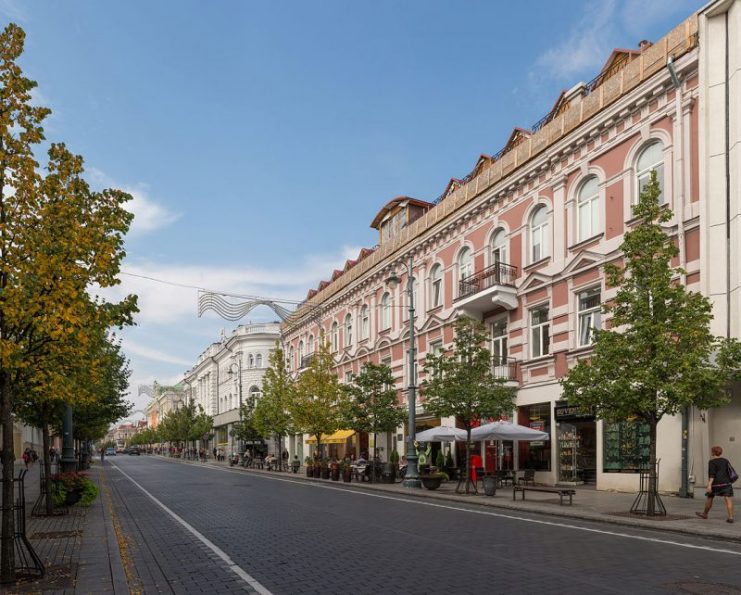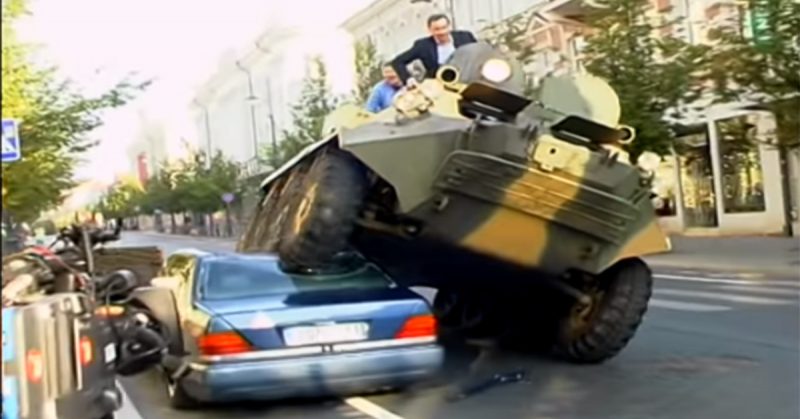The 15 ton amphibious eight-wheeled military vehicle barely slowed as it crushed the luxury car. In a video released by the mayor’s office, a man (assumed to be the owner) approaches the car after the mayor has crushed it.
On July 30, 2011, the mayor of Vilnius, Lithuania, drove a Russian BTR-80 armored troop carrier over a Mercedes Benz to illustrate that his office would crack down on people parking illegally in bicycle lanes.

The mayor, Arturas Zuokas, approaches the shocked-looking man and advises him to park legally next time. After the car is towed away, the mayor sweeps up the broken glass before riding off on his bicycle — using the correct bike lane, of course.

The entire scene was a stunt designed to draw attention to the mayor’s efforts to get more people riding bicycles in the nation’s capital city. The Mercedes was purchased specifically for the stunt.
It was one of the multiple controversial moves the mayor has made while in office.
As part of the car-crushing campaign, his office released a photo of the mayor riding atop the BTR as it drove over the car. The photo had been doctored to remove the producer of the film who was also riding in the carrier at the time.

When releasing the photo, the mayor’s office did not reveal that the photo had been altered, leading to at least one news organization having to issue an apology to its readers for printing an altered photo as if it were a legitimate picture of the event.
Zuokas was in the middle of a project to improve transportation in the city by expanding public transport and increase the number of bike lanes to encourage greater bicycle usage. He was clearly annoyed that, after all his hard work, people would park in his bike lanes, thus blocking the path of cyclists.

The video of the stunt was placed on the mayor’s YouTube channel. A spokesman for the mayor said at the time that Zuokas was prepared to crush an illegally-parked car again, if the need arose.
Vilnius has a track record of publicity-raising acts. After Zuokas left office, the city released a tourism campaign in which it compared itself to the female “G-spot.” The campaign featured posters of a woman lying on a sheet which had a map of Europe printed on it.

She was clutching the spot on the map where Vilnius would be and wore an ecstatic look on her face. The poster stated that, like the erogenous zone, no one knows where it is but when they find it, they think it is incredible.
Catholics in the region were up in arms over the advertisement. They called it sexist and insisted it exploited the sexuality of women. They also were concerned that it promoted the city as a sex tourism location.

Read another story from us: 10 Soviet Tanks of World War Two – The Good, the Bad, and the BEASTLY
The central government of Lithuania worried about the timing of the campaign since it ended just before the Pope’s visit to the country.
Even Zuokas was critical of the campaign. He pointed out that Western countries were no longer using such blatant sexuality to market anything anymore.
